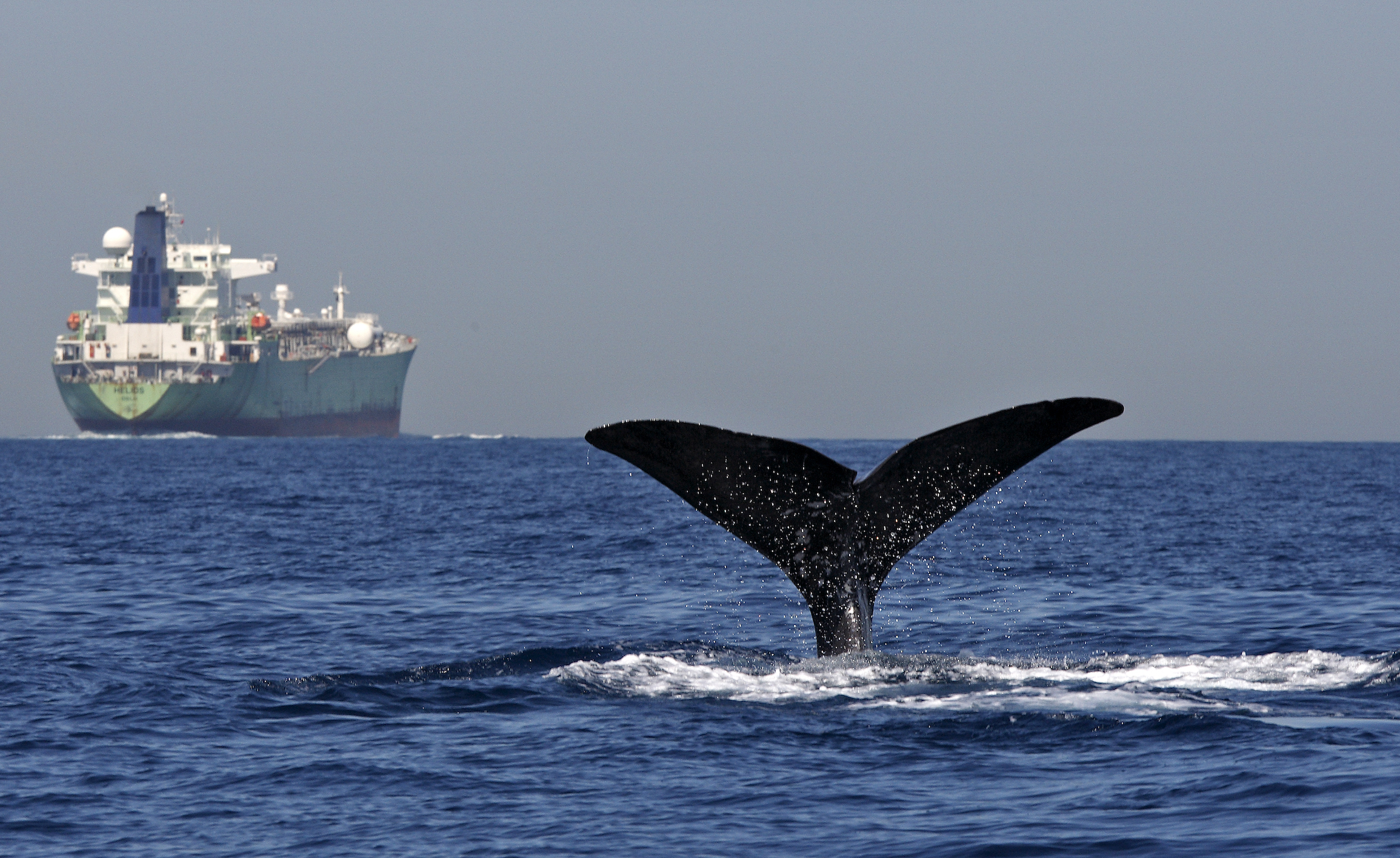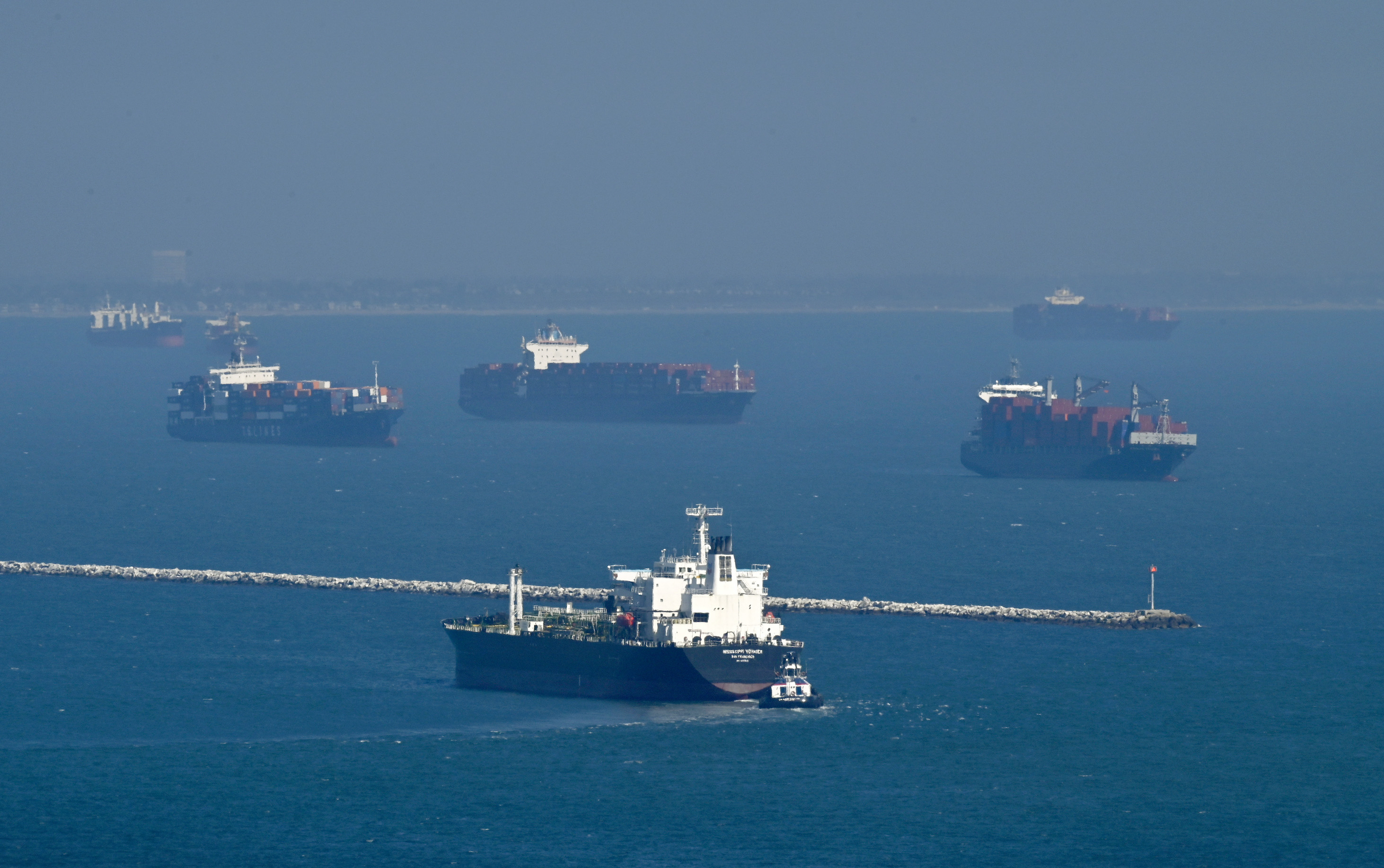
Sciences & Technology
Man bites shark: How dangerous are humans to sharks?

Mathematical modelling reveals that human-driven noise in our oceans is affecting marine life, particularly whales, confusing their annual migrations
Published 30 September 2021
The long-distance migrations performed by groups of animals offer some of the most spectacular natural phenomena on our planet.
While environmental cues – like celestial information and the Earth’s geomagnetic field – help orient animals en-route, in a migrating group each individual is believed to benefit further from the ‘wisdom of the crowd’.

If we look at humans, a steady stream of supporters walking to a football match before kick-off can be enough to find your way to the stadium, without the need for your phone. Other animals are the same.
In our research, we mathematically modelled the impact that human-driven noise pollution has on whales as they migrate. The results we found suggest that our noisy oceans are interfering with their communication and slowing them down.
Certain species of whale annually travel across thousands of kilometres of open water between feeding and breeding grounds.

Sciences & Technology
Man bites shark: How dangerous are humans to sharks?
Back in 1956, Jacques Cousteau’s famous documentary Le Monde du Silence (or The Silent World) showed the ocean and its depths as a quiet place. But the ocean has never been silent – sound travels much farther underwater than in the air.
As a result, many marine animals have evolved to rely heavily on sound to interact with both the environment and with each other.
In a pristine marine soundscape, it’s believed that calls from certain whale species may travel hundreds of kilometres. Consequently, two whales that are far apart may remain in regular communication throughout their migration.
But ever-increasing human activity in our seas and oceans has led to a marine soundscape that is far from pristine. Shipping traffic, natural resource exploration, and naval operations all contribute to what has been dubbed the ‘Anthropocene soundscape’.

This increase in human-driven noise has a number of negative effects on marine life.
Animals become more susceptible to predation, avoid established feeding and breeding grounds, and both amplify and simplify their communication calls in the presence of increased background noise. In fact, some mass whales and dolphin strandings have been linked to exposure to high levels of noise.

Sciences & Technology
The ‘Russian dolls’ of coral reefs
The simplification of calls in the presence of increased background noise is known as the Lombard effect. Humans do the same thing when talking in a loud environment. Consider how you talk to a friend in a quiet room, compared to how you talk to that same friend at a loud party.
While we’re not able to decipher the meaning of whalesong, there’s evidence that less information is encoded in the simplified calls. Additionally, increased background noise leads to a reduced communication range – it has been estimated that minke whales lose around 80 per cent of their range.
This can decrease from more than 100 kilometres to less than 20 kilometres when the background noise increases from 67.5 decibels to 87.5 decibels.
So, noise pollution can have multifaceted negative effects on communication – it reduces the distance of which whales can communicate and the information communicated is simplified.

The question our team set out to answer is how the change in communication ability affects the ability of whales to undertake long-distance migration. But it’s difficult to conduct studies directly on whales, as one pair of researchers drily noted in the 70s – “whales are reticent laboratory subjects”.
However, mathematical models allow us to distil what we know about whale biology and behaviour into a mathematical description that we can then analyse. Once we are satisfied that the model gives an accurate depiction of reality, we can then make changes in the model that would not be easy to make in practice and see how their navigation and migration behaviour changes in response.

Our model describes the migration path made by each member of a population, where each whale plots a course based on the information available from the environment and communicating with other group members – whales can communicate the direction in which they are travelling.
When whales have good information and travel in a common direction, the group navigates effectively. But reduced communication ranges and less information leads to less confidence and efficiency in the direction of migration.
Imagine if you couldn’t find a location, so you asked a group of friends where they thought it was. If they all told you different directions, you wouldn’t have much confidence about where to go. But, if they all told you the same direction, you’d be much more confident.

Our study captures this behaviour and allows us to examine whale migration and navigation in a noisy environment.
We applied our model to minke whale migrations in the North Sea, where there is significant noise pollution from oil and natural gas exploration and shipping traffic.
While our model is certainly a considerable simplification and constructed with the primary intent of illustration, we found that migration can occur more slowly – with 15 per cent more time required to make the same journey – when there’s noise pollution.
This may not sound like a lot, but 15 per cent extra time spent moving means additional energy expenditure, leaving less energy and time for breeding and searching for food, as well as a demand to replenish that lost energy.
Understanding the impact of human-driven marine noise pollution is an ongoing process, but it’s a crucial step toward sustainable human stewardship of the oceans.
Banner: Getty Images